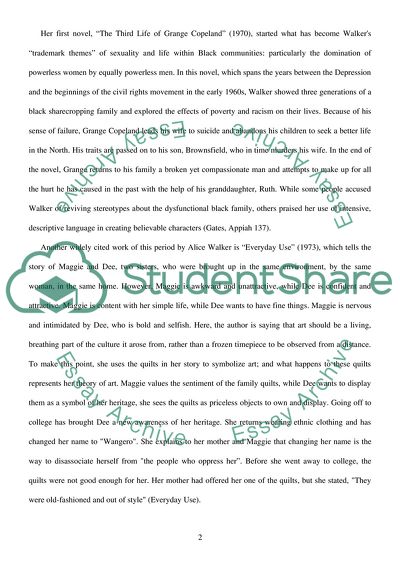Cite this document
(“Alice Walker Essay Example | Topics and Well Written Essays - 2250 words”, n.d.)
Retrieved from https://studentshare.org/literature/1515016-alice-walker
Retrieved from https://studentshare.org/literature/1515016-alice-walker
(Alice Walker Essay Example | Topics and Well Written Essays - 2250 Words)
https://studentshare.org/literature/1515016-alice-walker.
https://studentshare.org/literature/1515016-alice-walker.
“Alice Walker Essay Example | Topics and Well Written Essays - 2250 Words”, n.d. https://studentshare.org/literature/1515016-alice-walker.


